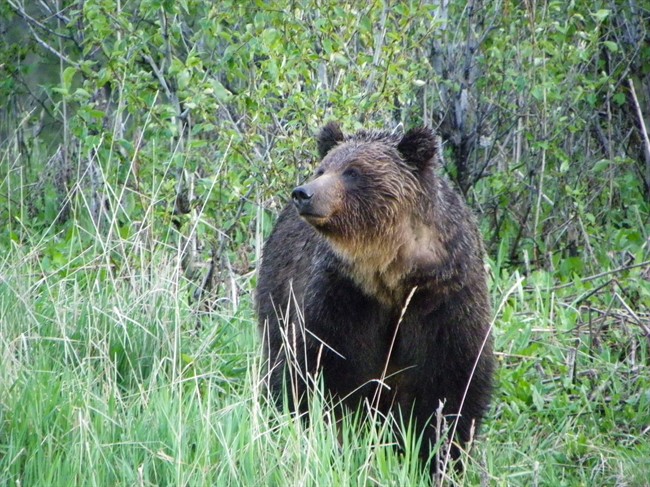CALGARY – Some of the world’s foremost bear experts are looking at new ways to prevent grizzlies from getting killed along railway tracks inside Banff National Park.

A dozen bears have been killed and a half dozen cubs orphaned in the last decade and experts estimate there are now only between 45 and 60 grizzlies left in the park.
Last year, Alberta reclassified the species as threatened because of rapidly dwindling numbers.
North American bear experts who met in Banff this week looked at plans already in place and considered other solutions for the long term, said Bill Hunt of Parks Canada.
“There’s a whole range, everything from gadgets to environmental management.”
Hunt said solutions include reducing the amount of grain spilled on railway tracks, which attracts the bears. Grizzlies also use the tracks as a transportation corridor through deep snow or in swampy and muddy areas.
The federal government announced its intention last fall to reduce the number of bear deaths caused by trains. The strategy included better use of train whistles and fences to keep bears away. It also suggested gates and structures to discourage the animals from trying to use the tracks as an escape route in the path of oncoming trains.
Canadian Pacific Railway is spending $1 million on research to come up with ways to deter grizzlies. One idea is for redesigned hopper cars.
“We looked at ways of trying to train bears to avoid the tracks whether that was through structural things like fences or … an electromat which might keep bears from sneaking around the fence,” Hunt explained. “It’s basically like an electric carpet section you can lay out.”
The scientists also examined longer-term solutions such as modifying vegetation in areas away from the tracks, prescribed burns and creating new forest growth that will produce berries to keep bears off the tracks.
Proposals are being sought by December and grants are to be handed out early next year.
Hunt said it is possible some pilot projects could be in place by next spring when the bears return from hibernation.
“There’s definitely a rest period over the winter to hit the planning phase.”
Studies show that about half of Alberta’s estimated 700 grizzly bears live in the foothills and mountains in the Grande Cache region west and north of Edmonton.
Most of the rest are scattered in pockets up and down the Rocky Mountains along the boundary with British Columbia.

Comments